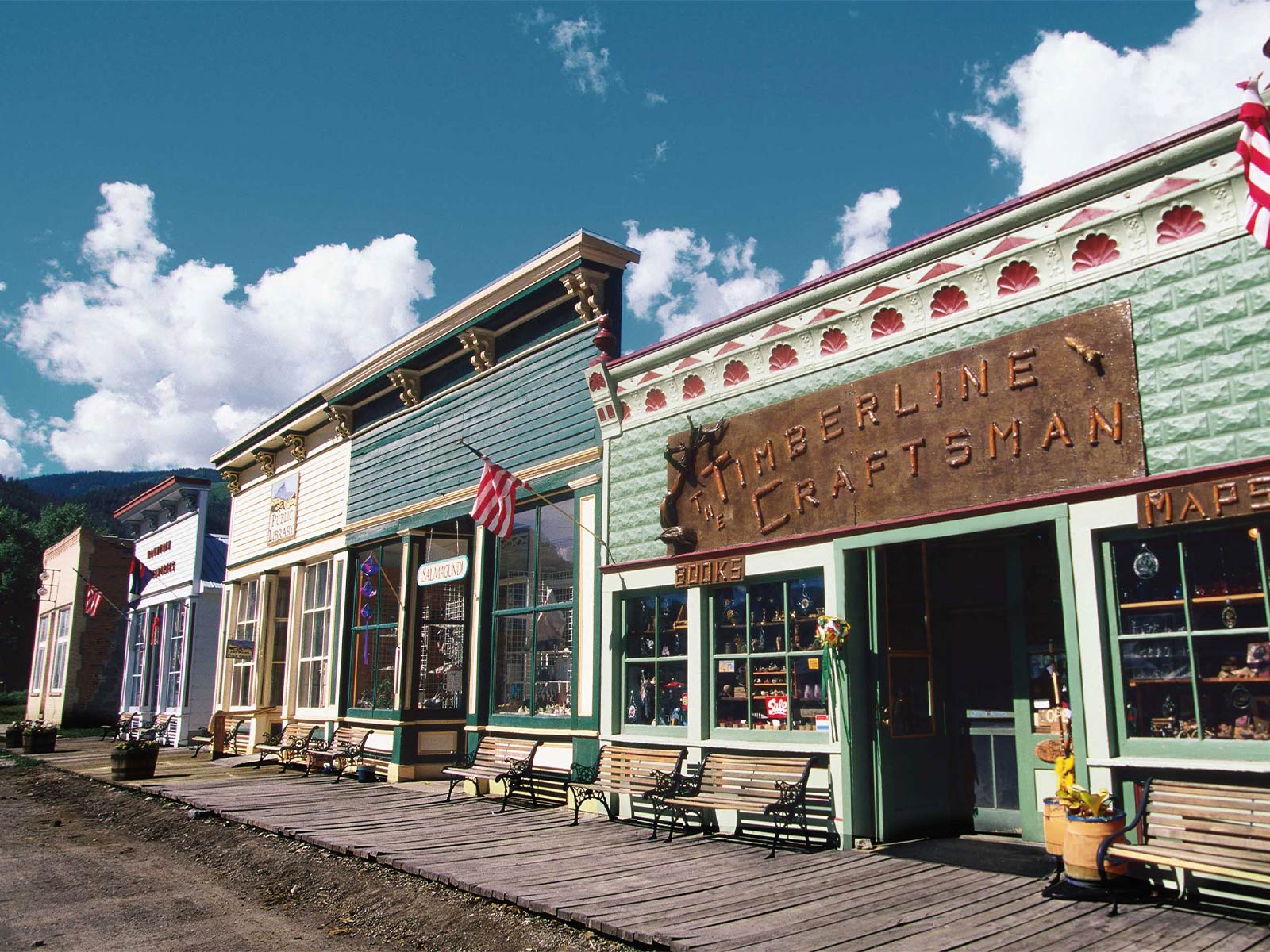The Local newsletter is your free, daily guide to life in Colorado. For locals, by locals.
Marshall Pass to Stony Pass
Miles: 123.7
Segments: 16 to 23
You’ll step off the beaten track (only metaphorically—the Colorado Trail Foundation meticulously maintains this path) in south-central Colorado, where the sky gets bigger, the water sources become scarcer, and a truly out-there vibe prevails. Hike across mesas, through cattle ranges, and into blossom-strewn alpine tundra with views of the Uncompahgre and San Juan peaks ahead. This spectacular stretch boasts the trail’s high point at 13,271 feet and entire days’ worth of hiking above 12,000 feet.

Best Dayhike
Cataract Lake
The word “cataract” can be used to describe certain types of waterfalls, and waterfalls are exactly what you’ll get en route to this lake perched at 12,100 feet. Head south from Cataract Creek trailhead near Lake City to see one cascade after another, then traipse through meadows dotted with columbines and ponds. Hit Cataract Lake at mile 4.6, keeping a lookout for moose among the willows. Hiking another mile or so south will get you to the Continental Divide (and the Colorado Trail proper) for views down the Pole Creek valley one way and up 14,004-foot Sunshine Peak the other.
Best Casting
Cochetopa Creek
Anglers, this one’s for you: The centerpiece of this trip, Cochetopa Creek, is home to plentiful brown and rainbow trout. And its wide, sage-and-willow-strewn valley—framed with views of 14,014-foot San Luis Peak and full of deer, elk, and moose—makes for a scenic spot to practice your casting. From the remote Eddiesville trailhead west of the town of Saguache, hike south on the Colorado Trail (CT) to enter the La Garita Wilderness. The creek flows from its headwaters through the valley for about eight miles, with a wealth of campsites along the way (we’re partial to the higher-elevation ones past mile seven). The trail is mostly mellow, but you can increase the challenge by hiking up to the saddle under San Luis Peak at mile 8.8 or even tagging the fourteener (another 1.2 miles and 1,400 feet of climbing).

Best Weekend
Stony Pass High Country
Prohibitively long shuttle logistics make it tricky to pull off weekend-worthy point-to-point hikes in this section of the CT, but no matter. The breathtaking—literally, as you won’t drop below 12,000 feet—trail northeast of Stony Pass is pretty enough to hike twice on what is a 12- to 21-mile, out-and-back trip, depending on where you decide to camp. “It’s some of the best alpine hiking Colorado has to offer,” says thru-hiker Nika Meyers. From the four-wheel-drive-accessible Stony Pass trailhead outside Silverton, head north on the CT across wildflowery tundra with endless San Juan Mountain vistas as your constant companions. Pass the headwaters of the Rio Grande and hug the Continental Divide, scoping for ptarmigan and marmots as you look for a campsite. Best bets: the meadow just below the CT in Cuba Gulch at mile six or near the unnamed tarn above Cataract Lake around mile 10.4. Next day, turn around and go back the way you came. A clear weather window is critical for such an extended high-elevation trek; we suggest September.
Trail Town Spotlight
Lake City
The 400-some residents of this idyllic mountain village gladly open up their arms to CT hikers. Must-do’s: Catch the shuttle from Spring Creek Pass (trail angels run a free one; the Sportsman Fly Shop offers another for $50 per carload); bed down at Raven’s Rest Hostel; and chow down on a free, homemade dinner Sunday nights during high summer at the Trail Hiker Center at the Community Presbyterian Church, which also has free Wi-Fi and espresso.

Trail Tales
Kai Malloy, a two-time thru-hiker who grew up in Colorado, earned the unofficial title “group expert” in the Colorado Trail’s Facebook group thanks to his wide-ranging backpacking expertise. Here, he answers the top three questions he gets about the CT.
How do I deal with the elevation?
“Ninety-nine percent of people—if they spend a few days at [elevation] before their hike, take things slowly, drink plenty of fluids and electrolytes, and eat fairly regularly while hiking—by the time they get to Kenosha Pass, they’re adjusted.”
What about bears?
“You need to protect your food. A lot of people opt for an Ursack, which is a fabric sack with an odorproof liner. In areas where I know there’s bear activity, I’ll hang it from a tree to add security.”
How do I avoid summertime lightning?
“Plan ahead. Set yourself up so that you’re going over the high passes or places prone to lightning early in the morning. The rule of thumb is to be well below treeline by noon.








